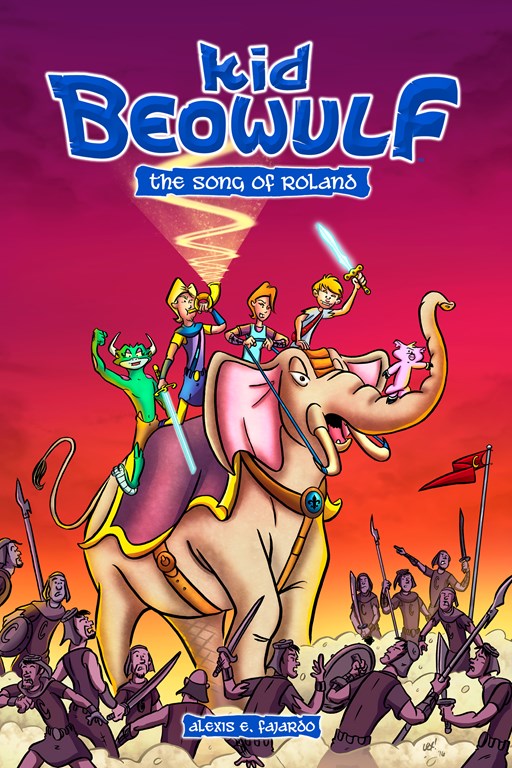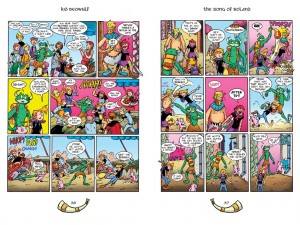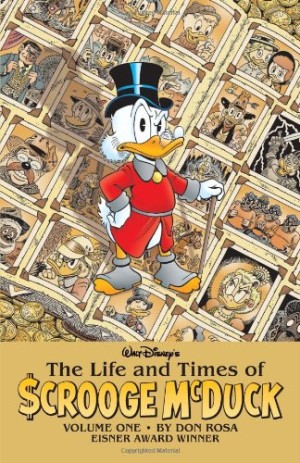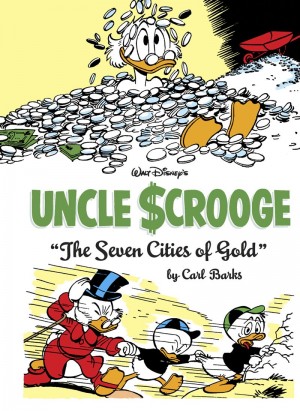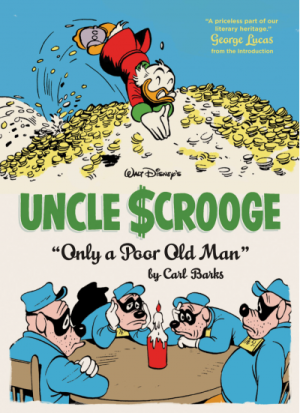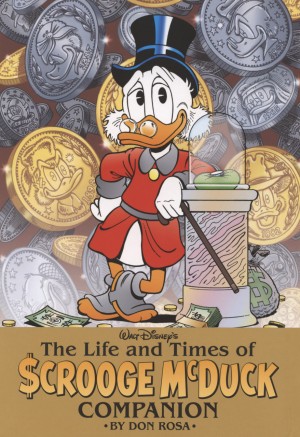Review by Ian Keogh
From the outside, a buddy book set in ancient times starring Beowulf and Grendel is a distinctly odd idea to those that know their Norse legends. With The Blood-Bound Oath, however, Alexis E. Fajardo professionally erased all thoughts of strangeness with a well plotted and drawn kids adventure, yes, featuring the entire primary cast from Beowulf in their younger days. Except the dragon was already several thousand years old.
That book ended with Beowulf and Grendel meeting for the first time and banished from their Danish homeland. When The Song of Roland opens they’re heading to Francia, a land encompassing what’s now France, Germany, Switzerland, Austria and much of Italy, where their grandfather’s brother Holger relocated many years before. The title is also that of an 11th century French legend reflecting on earlier times, and the book opens with a more realistically drawn sequence providing this, delivered in very forced rhyme. After a brief introduction for Beowulf and Grendel, Fajardo switches to Holger’s experiences journeying to France decades before. The research is considerable, and Fajardo incorporates characters from another old French chanson, in effect earlier equivalents of the Three Musketeers, but his homages extend beyond that as there’s a definite familiarity about a couple of muggers in what’s the present day sequences.
Once again Fajardo is unafraid of diverting his story away from his nominal lead character for dozens of pages at a time. Holger’s introduction to Charlemagne and the subsequent political and military manoeuvrings confronting a threat from Spain are exciting, and build tension as there’s betrayal afoot. As Beowulf and Grendel are gradually reintroduced to the narrative for longer sections the relevance of the flashbacks becomes more apparent, and Fajardo’s ambitious story unfolds.
The Song of Roland is a long way removed from the legend of Beowulf, but provides stirring children’s adventure with the occasional humorous interlude along with dozens of smile inducing references that will fly over younger heads. Some are visual (the Chuck et Fromage logo, or Granma Ben from Bone) and others verbal, but all are witty. Everything leads to a well staged finale when the elements we’ve been told about come together in unpredictable fashion at a preposterous battleground in cartoon mayhem. Kid Beowulf is a lot of fun in the Asterix tradition, and more people should know about it.
As in the previous book there’s a wealth of back-up material providing historical information and a guide to some of the in-jokes during the story. Anyone who can’t wait for The Rise of El Cid is advised to check out the goodies available at the Kid Beowulf website.
